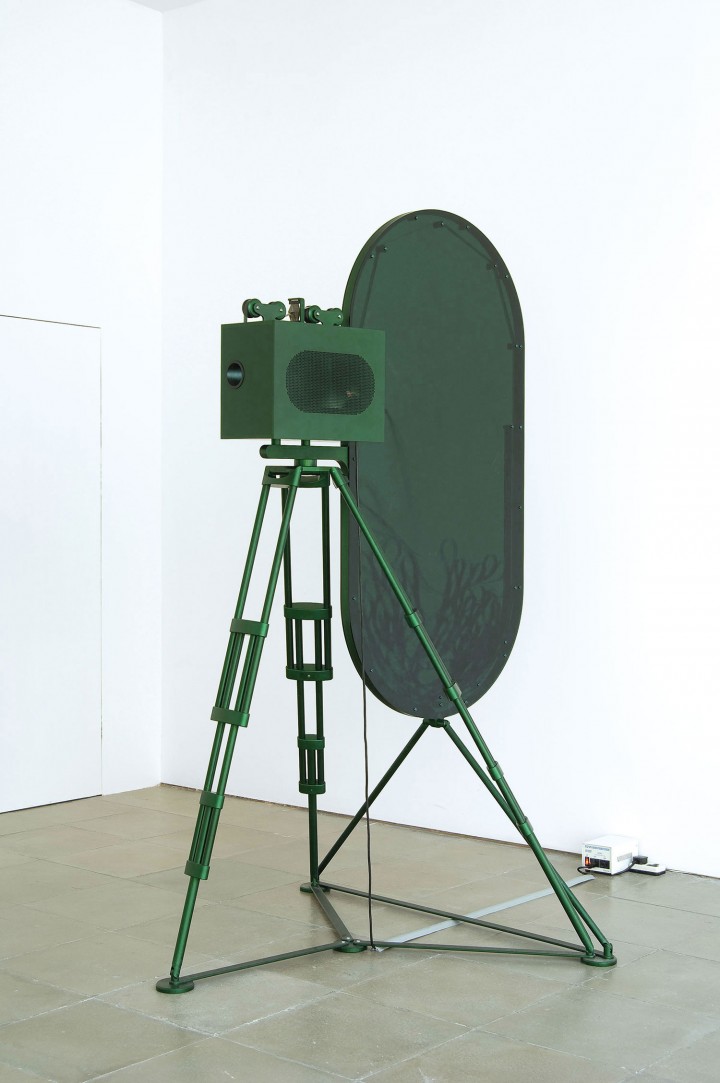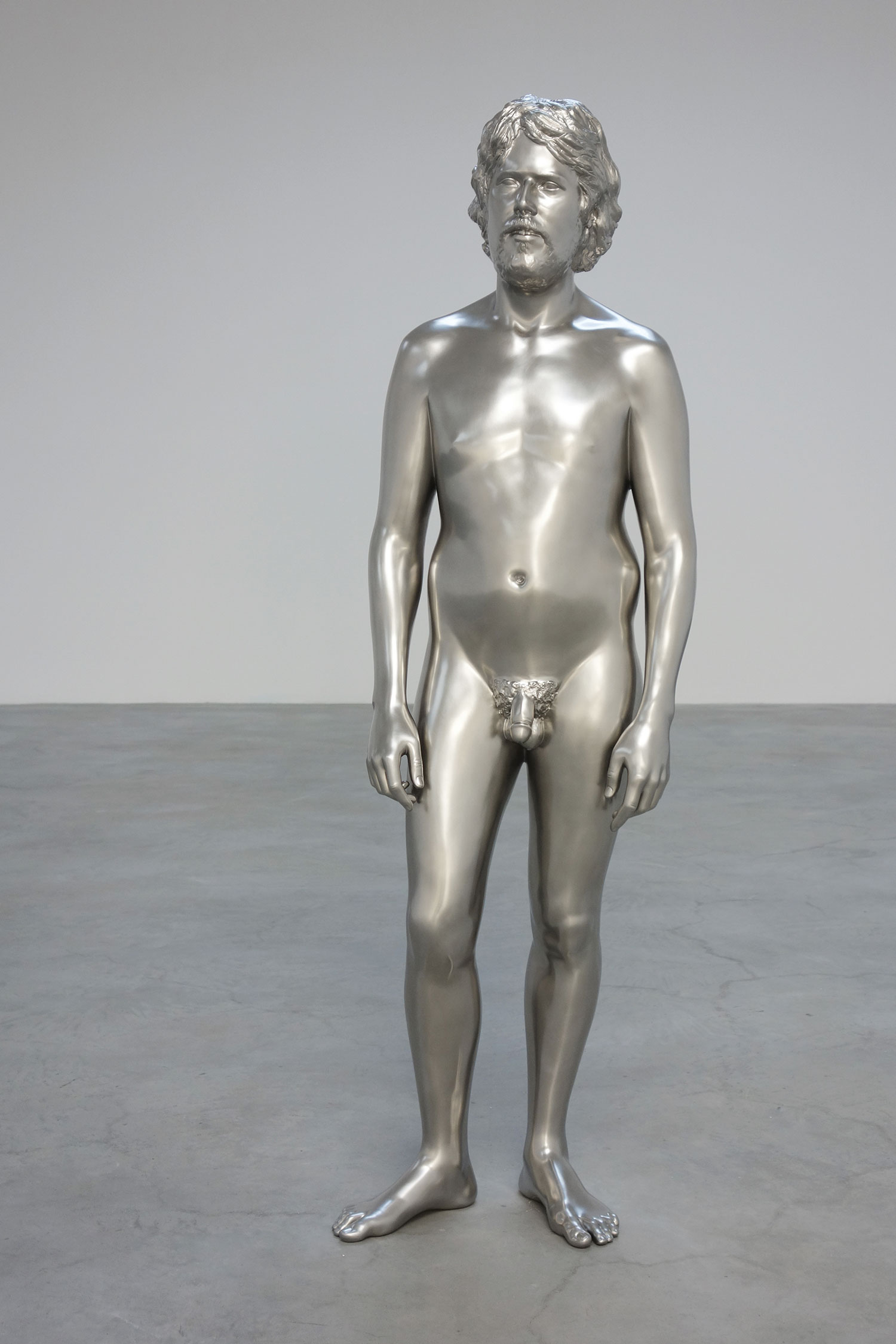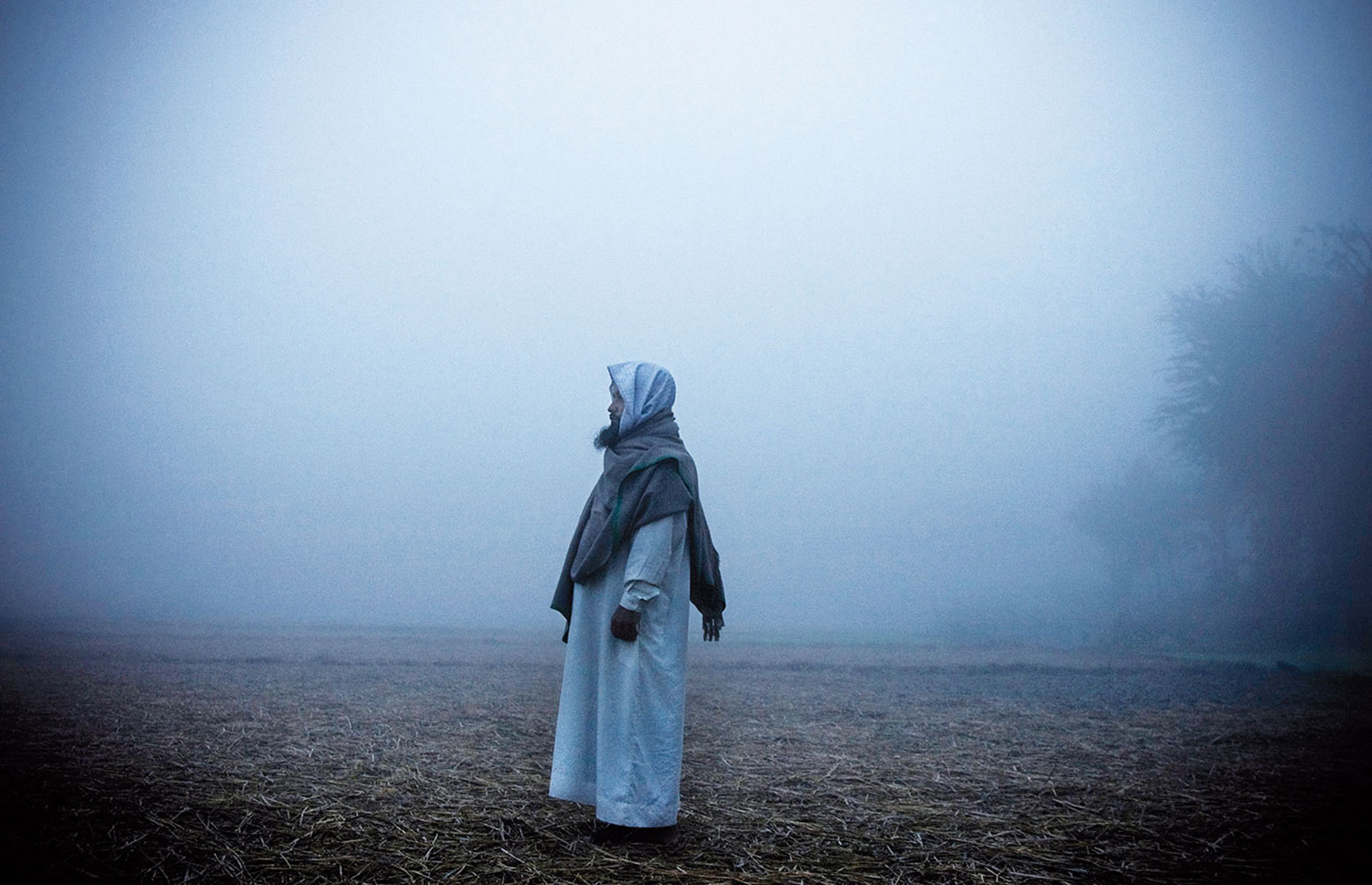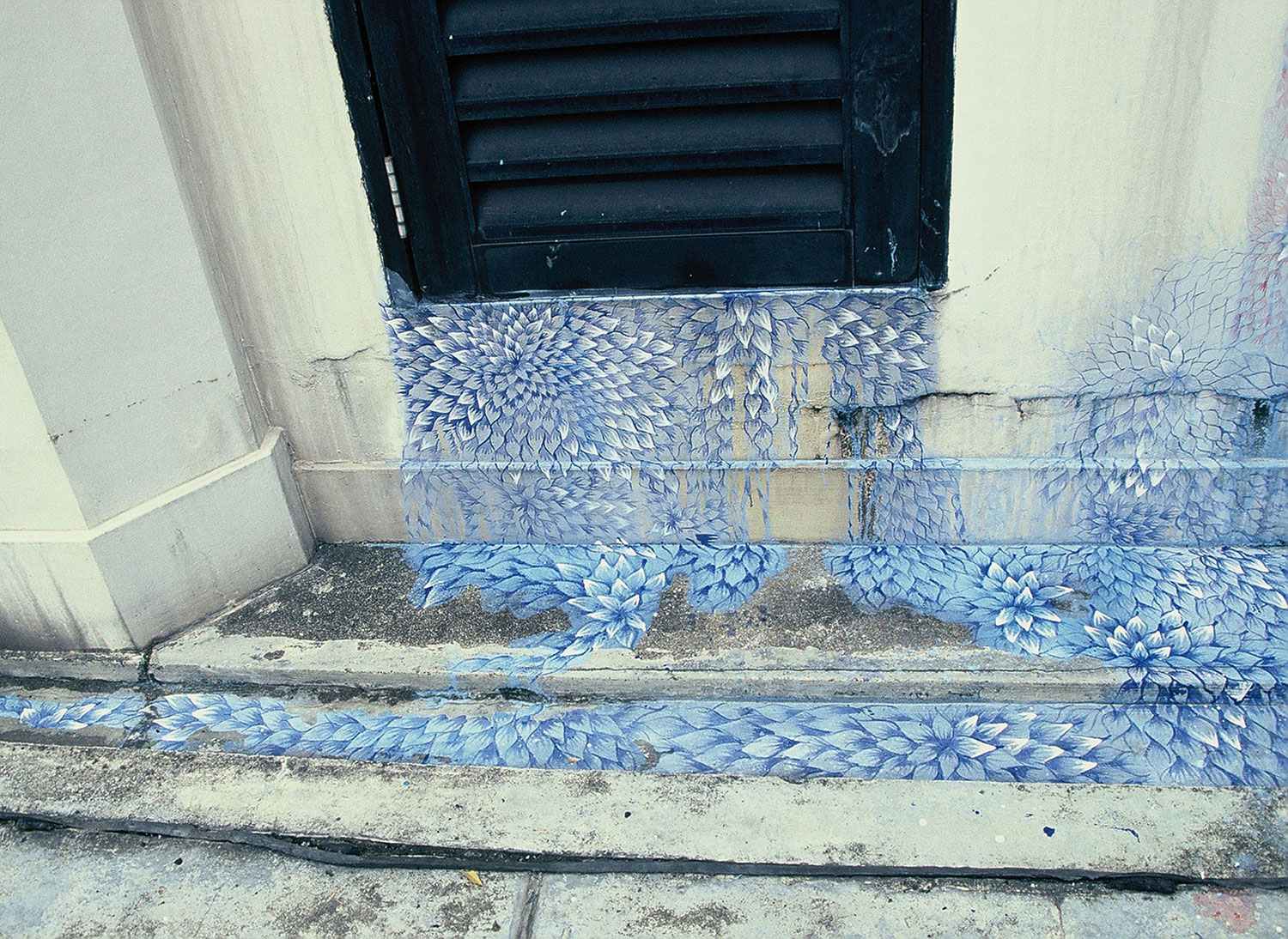
Matthew Shields: As an autodidact, you join a long and storied lineage that includes Leo Tolstoy, Edgar Allan Poe, Herman Melville, John Cage, Le Corbusier and Mies van der Rohe. For example, the image of you installing your first camera obscura in a field adjacent to your uncle’s ranch in Abbotsford speaks to a distinctly self-directed line of inquiry. While you did not complete a formal art education, the typical initiation into the academy, you have accomplished much within the art institution’s field of legitimizing authority. I bring this up because I think that the reading of amateurism in your work, the figure of the amateur and the discourses that attend it, could justifiably incorporate a stronger element of institutional critique.
Rodney Graham: I am not particularly interested in critiquing these increasingly beleaguered institutions. It seems rather the time to join fundraising efforts on their behalf, and to protect them from the cretins of the right who would shut them down. Also that part of the art world is just not that interesting as a subject, at least to most people. I would venture to say it’s even a little bit boring. As to the question about my amateurism, I have to say I am less interested in that idea than I was in the past, when I may have played it up a bit. I used to identify with Duchamp and Raymond Roussel, who never worked a day in their lives. 20th century dandies. Now I admire super-humanly productive artists like Picasso and, today, Paul McCarthy. Also, artists are never really amateurs. They sell everything! Doesn’t Roland Barthes make a joke about the writer on holiday? You know, he writes a travel piece. When I think about it, I have actually had a lot of professional training, though much of it was on the job as an apprentice, with both Ian Wallace and Jeff Wall. I was lucky in that respect. Having said that, I did a piece called The Gifted Amateur (1962).It is about a professional in the middle of a life crisis. Then he discovers Morris Louis, and he decides to give this kind of painting a try because it looks easy and fun, which it is basically, at least compared to some other types of painting.
MS: Speaking of the cretins of the right, how did you come to put a hex on George W. Bush? It was more explicitly political than any prior work, although hardly didactic, cloaked as it was in the rhetoric of Antonin Artaud’s hermetic, symbolist doodles, which interested you at the time.
RG: As to the exact formula of the hex on George W. Bush I can’t remember, but at least it worked because he is now serving a life sentence in a maximum-security prison.

MS: When I look at My Late Early Styles (Part I, The Middle Period) (2007-09), I immediately recall the work of painter Johann Zoffany, particularly The Academicians of the Royal Academy (1771) and Tribuna of the Uffizi (1772-78). This association is appropriate given your interest in the physical context of the academician’s studio, laboratories of Western, empirical observation. Can you rehearse for us your evolution from a staunchly conceptual, post-studio artist to your current interest in the mythos of the studio?
RG: I guess this happened quite suddenly — a mystical epiphany in Venice when I saw that big polychrome sculpture of Jeff Koons having sex with his porn star girlfriend and member of the parliament. He really raised the bar. I thought it was time to ramp it up a bit. I think works like this made a lot of conceptual artists feel ineffectual, like Pete Townshend and Eric Clapton when they first heard Jimi Hendrix! I think I made Vexation Island (1997) after that, which involved a lot of financial speculation on my part. I put everything I had into it, and it ended up being a success. It was a very exciting time and I became converted to making works with more popular appeal. And this led somehow to the studio I guess.
MS: While in the past you have assumed postures of recline, movement is dissembled more expressively in Dance!!!! (2008) and The Leaping Hermit (2011). Can you discuss your recent interest in the gesture and rehearsal of dance?
RG: You are right about my movement towards dance. I don’t know why really, but I am working on a piece about an old dance master — a subject suggested to me by Shannon Oksanen. I am working with some images of Balanchine from the late ’40s where he is rehearsing a production of Orpheus that he did with Noguchi. I am making my own fifties-style prop lyres inspired by the Vulcan harp from Star Trek and Prince’s guitar as well as that of Picasso.
MS: Few other contemporary artists have explored the possibilities of mise en abyme structures as effectively as you. Where would you locate the origins of your ongoing interest in mise en abyme? I know that very early on you were interested in Foucault’s writing on Diego Velázquez’s Las Meninas (1656). You would have also seen the cover of Pink Floyd’s Ummagumma (1969) around the same time. How do mise en abyme strategies inform a work like Paradoxical Western Scene (2006) for example?
RG: I wrote an essay on Foucault’s analysis of Las Meninas for a course in Structural Anthropology while a student. I thought it was pretty good, but I only got a mediocre mark. I should have disputed the mark. That’s what students do now, being more savvy. In regard to the authority of professors, some of us were much more obedient in the ’60s. I mainly use it for comic effects in pieces like Paradoxical Western Scene (2006), which is a pastiche of two record album covers, one by Marty Robbins and the other by Peter Sellers. I have been influenced a lot by album covers, though not by Ummagumma. The cover of Country Life (1974) by Roxy Music, for example, partly inspired my early piece 75 Polaroids (1976): the original Canadian pressing I think showed a flash photograph of a patch of shrubbery. The original British version has the two women in underwear, shot, I believe, by Bryan Ferry, but it was censored at the time. Another influence on Paradoxical Western Scene is Michael Snow’s Authorization (1969), which is the definitive work of that type.

MS: Early on you wrote a short text about Robert Smithson’s brain. Could you elucidate this now somewhat obscure text?
RG: The text on Smithson was modeled on the great short texts that I remember in Barthes’ Mythologies (1957). I don’t have the text, but I remember it used the brain coral as an analogy. I encountered a brain coral in situ on the island where I shot Vexation Island, and Shannon took a picture of me looking at it. Later I found an almost identical photo of Glenn Gould looking at a brain coral. What a thrill!
MS: Could you discuss the dialectic that developed between Duchamp and Picasso over the course of the twentieth century? You have said that the introduction of painting into your practice and a closer investigation of Picasso’s analytic cubism instigated a further methodological shift away from Duchamp towards Picasso.
RG: I just came back from Madrid where I saw the Raymond Roussel show in which I have some works, and it made me think again about this whole tradition out of Roussel, of which Duchamp is the prime representative, and I kind of get it again. There is a good essay by Annie Le Brun in there, very anti-Foucault, at least against Foucault’s interpretation of Roussel. Roussel was so important to me as a student, having been introduced to his book Impressions of Africa (1910) by Ian Wallace. We started this interview six months ago and I think I have changed my mind. I like the idea of going back to the hermetic/aristocratic tradition of Duchamp and Roussel, who really did teach him everything, and to whom I partly owe my decision to become an artist rather than a writer or something else.
MS: As you know, a few years ago John Baldessari was asked who he thought was the most important or influential contemporary artist, to which he responded: “Rodney Graham.” If you were posed the same question, how would you respond?
RG: What can I say? It is Baldessari’s student, Mike Kelly. His death was one of those truly shocking things. I only met him once or twice in passing, but I really admired his work. As an artist you had to be just a little bit jealous of his brilliance. I feel honored that he actually performed my Lobbing Potatoes at a Gong(1969) (2006) at a noise festival that he organized. But he didn’t lob — them he hurled them.





